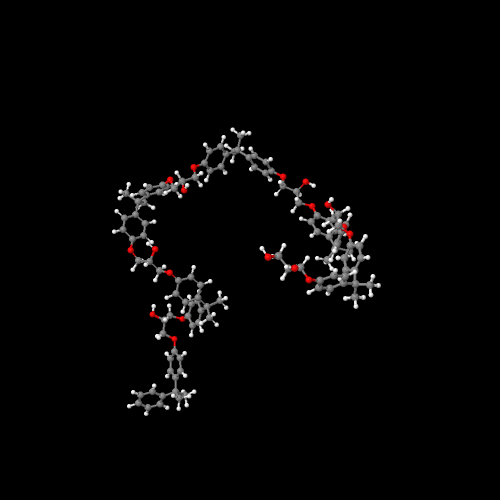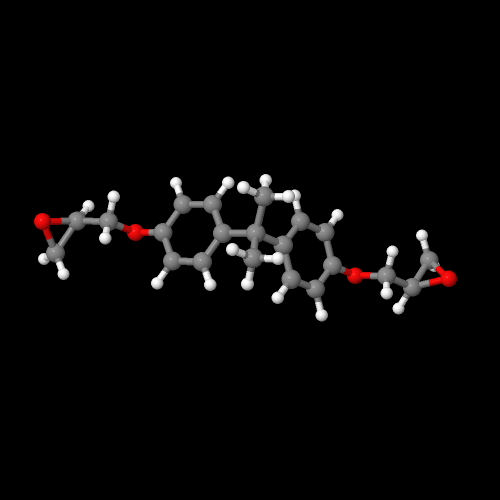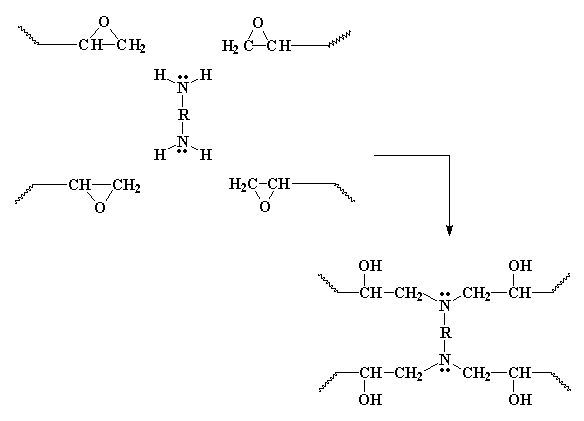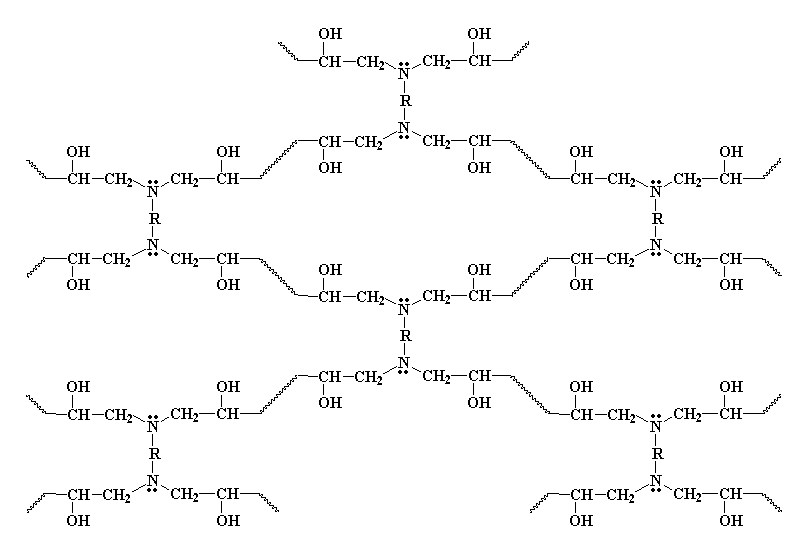


The model above left is an image of the 3D model of the amine-cured epoxide
you can view by clicking here or you can just click on the image itself.
The model on the right is the product of reaction of BPA with epichlorohydrin. It's a "diepoxide," meaning it has two functional groups that can react to form polymers. Either way, close the new window that opens when you are ready to come back here.
Having a child does not make a man a Dad. That only makes him a father. To be a Dad, a father must own a few of the trappings of dadhood. A recliner is first on the list. A big drinking glass that says "World's Greatest Dad" is also up there. And then there are certain handyman supplies that no true Dad can be without: duct tape, a drill, and of course, a tube of two-part epoxy adhesive. This page is dedicated to that part of Dad's arsenal. Two-part epoxy is really good for impressing the kids, because it obviously has two components, which must be mixed together before using. The kids will watch you and think "that must be some really powerful stuff if you have to mix it together!" and from then on they'll think Dad is a real fix-it pro.
But when you get older, more skeptical, and less easily impressed, you may start to ask questions. What are those two parts? And why don't they come already mixed together? That would be the sensible way to do it, wouldn't it? I'll answer the first question first. The first part of the two-part epoxy is a low-molecular-weight polymer with epoxy groups at each end. This is what's shown in the model at the top of the page. Can you see the epoxy groups at its ends? Its structure looks like this:

In these prepolymers n can be a high as 25, but the diepoxy in Dad's two-part epoxy adhesive is more likely a small molecule with two epoxy groups, like one of the little fellows below. To see the first monomer below in more detail, along wtih the two starting materials used to make it, click here.

If Dad's two-part epoxy adhesive is two tubes of liquid, than the diepoxy is probably one of the small molecules. The bigger prepolymers are solids at room temperature. If n is as high as 25, the diepoxy is a hard plastic at room temperature. Diepoxies like that have to be heated up and melted before they can be mixed with that other part of the two-part epoxy mix.
Remember that other part? The second part is a diamine, which looks like this:

When you mix the two parts together, the diepoxy and the diamine, they do something fun. They react, and join together, in such a way that links all the diepoxy and diamine molecules together, like this:

Click here if you'd like to see how this reaction works.
What this gets us isn't a linear polymer. Instead, it's a crosslinked network, that looks something like this:

You see, all the diamines and all the epoxy molecules have become one big molecule. When this happens, the result is a hard substance that can be very strong, but not processable. It can't be molded into shape, or even melted. Think about it. This is why the two parts don't come already mixed together. If they did, they'd be a solid chunk, and not much use as an adhesive.
That still leaves an unanswered question. How do we get that low molecular weight polymer, the one with the epoxy end groups, in the first place? We make that by reacting bisphenol A with epichlorohydrin with some NaOH thrown in as a catalyst. If you want to know how this works, and how we can control how big this pre-polymer is, click here.

Epoxy resins make great adhesives, and are one of the few adhesives that can be used on metals. But they're also used for things like protective coatings, and as materials in things like electronic circuit boards and for patching holes in concrete pavement. What? You want more? Epoxies are also used to make composites. One way we make composites using epoxies is with a nifty process called SCRIMP.
Here are some other polymers that are used as thermosets:

|
Return to Level Two Directory |

|
Return to Macrogalleria Directory |
